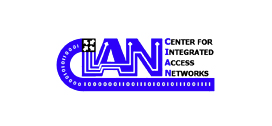Disco Ball Has Optical Signals Dancing Throughout Data Center
A team at the University of Arizona sent data across open-air signals using curved mirrors on the ceiling of a data center, greatly increasing the potential scalability of such “free space” networks. The research was conducted through the Center for Integrated Access Networks (CIAN), an NSF-funded Engineering Research Center (ERC) with headquarters at the university.
Free space networks have the potential to vastly increase the Internet information, such as video, that can be moved through data centers. Optical switches have been costly, slow, and too complex to manage for many data center applications.
Instead of sending data using light in fibers to interconnect the racks of a data center, this approach sends the data on optical signals through free space above the racks. Although free space optics has been used for data communications in the past, this application alone uses a micro mirror chip to diffract light rather than reflect light—effectively creating a hologram. Fixed curved mirrors on the ceiling, similar to a disco ball, are used to bounce signals between racks. Connections are switched by a chip that can manage the micro mirrors at microsecond speeds.
A switch with many ports will simplify the control of data flows. In the past, high speed and high port counts have been difficult to achieve in a single technology. This switching platform achieves both with switching speeds less than 15 microseconds and port counts that can exceed 104, an order of magnitude higher than other optical technologies. The port count enables each rack in a data center to talk directly to any other rack in the data center. The use of an integrated micro-mirror switching chip, similar to what is sold at low cost for projector and display technologies, promises inexpensive optical switching, as well.



